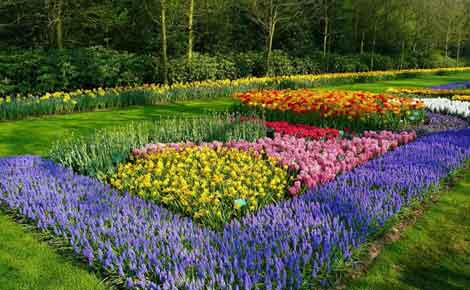
NAIROBI: The close-up experience of a garden is very different from a distant look from the street or from the inside of a building. When you are up-close, you not only see details better, you also hear, touch, smell and even taste the garden.
Our appreciation of the design is taken to a whole new level as we get closer to the natural and the man-made elements that form it.
In the home setting, it is likely that your interaction with the garden is going to be quite intimate. Hence it is important to create a good close-up experience.
Children will particularly have a close physical relationship with the garden’s surfaces and elements. This is not only because they are closer to the ground but because they are always investigating and learning about the environment by touching, smelling and tasting.
Creating a great close up experience involves designing to engage and please all the five senses.
While we often give consideration to sight, we tend to underestimate the strength or influence of other senses. Here are some tips to help you create an uplifting up-close experience.
Sight
Sight acquires new dimensions up-close.
The visual qualities of plants and other garden elements such as colour, texture and patterns become more pronounced and therefore more critical on an intimate scale.
Varying colours, textures and patterns provide richness, diversity and complexity to the design. Too much variation will however appear chaotic especially up-close.
It is therefore very important to keep variations controlled and simplified to maintain coherence and unity.
Sound
There are many ways to introduce interesting sounds to the garden. Strategically placed wind chimes can produce calming sounds even in the smallest of garden spaces. But if you are blessed with a larger garden, your options are vast.
You can incorporate a water feature with falling, splashing or cascading water.
Stay informed. Subscribe to our newsletter
The sounds produced by such moving water are unrivalled in producing a calming ambiance in the garden.
You can also use loosely-textured walkway finishes that produce crunching sounds as one walks along or even trees that whistle or rattle in the wind.
Touch
Touch is one of the most important yet least considered senses in garden design. No other sense elicits intimacy with the garden greater than the sense of touch. First, use plant varieties that can tolerate being touched. Then present them at places where users will easily touch and feel their diverse texture either intentionally or by accident.
Places as raised beds next to walkways and hanging baskets are good starting points. Similarly, vary hardscape textures from soft polished timber railings or floors to coarse stonework for a retaining wall.
This adds drama and interest to the textural scheme. Also create sunny and shady areas for temperature contrast.
Smell
Smell is essentially added by incorporating scented plants in the planting scheme. There are many clever ways to do so.
For a start, scented herbs can be planted in between paving blocks to produce their scented flavours when crushed under the feet or when the paving blocks get heated by the sun.
Whichever way you choose to incorporate them, planning is essential to produce a co-ordinated scheme. Intervals between one scented plant and the next are important so that their smells don’t mix up and confuse or overwhelm the users.
Taste
You probably guessed this one right. Adding edible plants can give users a chance to have a taste of your garden. Fruiting trees and shrubs can be incorporated in the planting scheme to provide fruits and nuts for the garden users.
Vegetable or herb gardens dedicated to providing greens and spices for your kitchen are also practical ideas to appeal to the taste buds.
— The writer is a landscape architect
 The Standard Group Plc is a
multi-media organization with investments in media platforms spanning newspaper
print operations, television, radio broadcasting, digital and online services. The
Standard Group is recognized as a leading multi-media house in Kenya with a key
influence in matters of national and international interest.
The Standard Group Plc is a
multi-media organization with investments in media platforms spanning newspaper
print operations, television, radio broadcasting, digital and online services. The
Standard Group is recognized as a leading multi-media house in Kenya with a key
influence in matters of national and international interest.
 The Standard Group Plc is a
multi-media organization with investments in media platforms spanning newspaper
print operations, television, radio broadcasting, digital and online services. The
Standard Group is recognized as a leading multi-media house in Kenya with a key
influence in matters of national and international interest.
The Standard Group Plc is a
multi-media organization with investments in media platforms spanning newspaper
print operations, television, radio broadcasting, digital and online services. The
Standard Group is recognized as a leading multi-media house in Kenya with a key
influence in matters of national and international interest.






